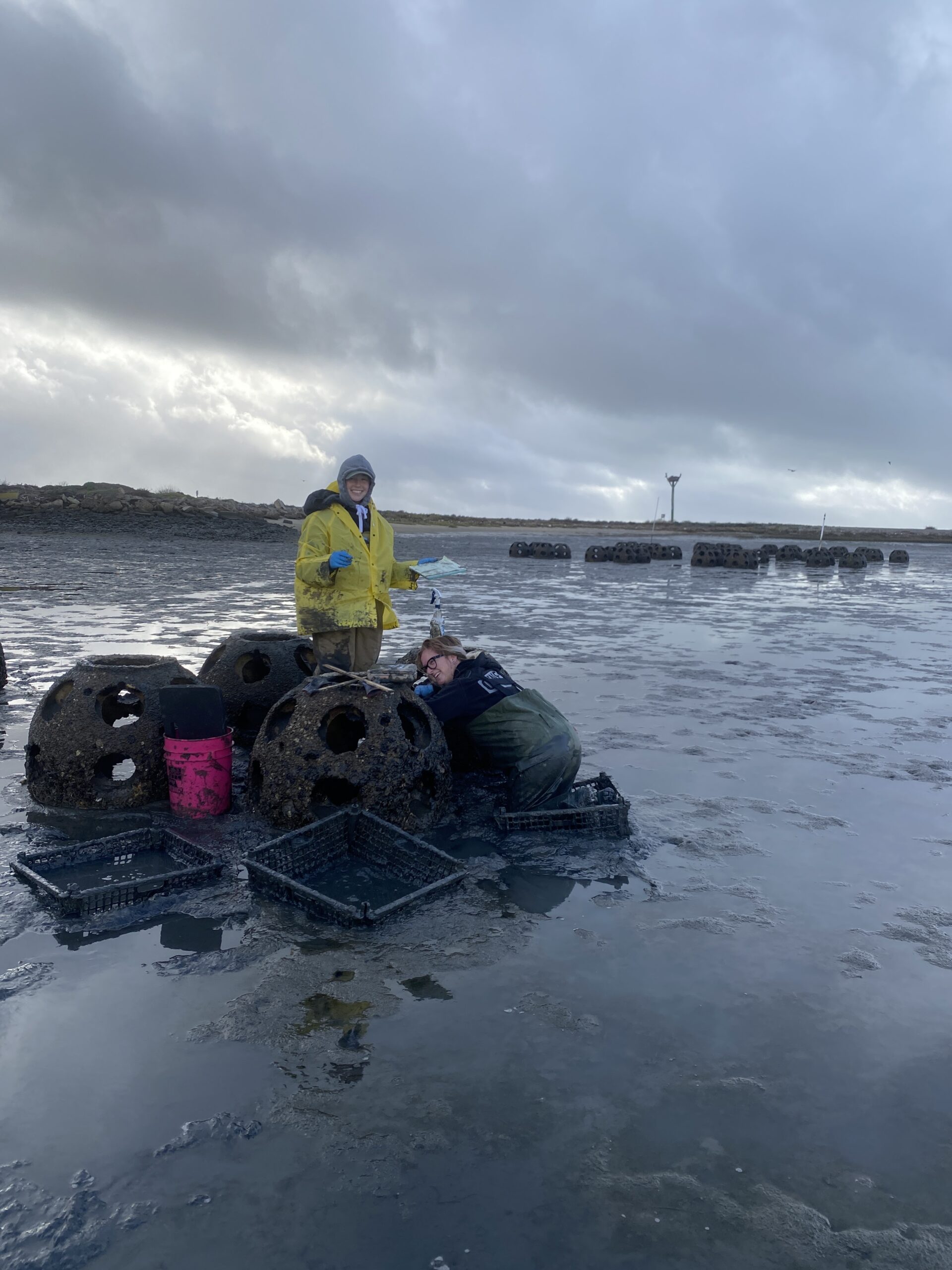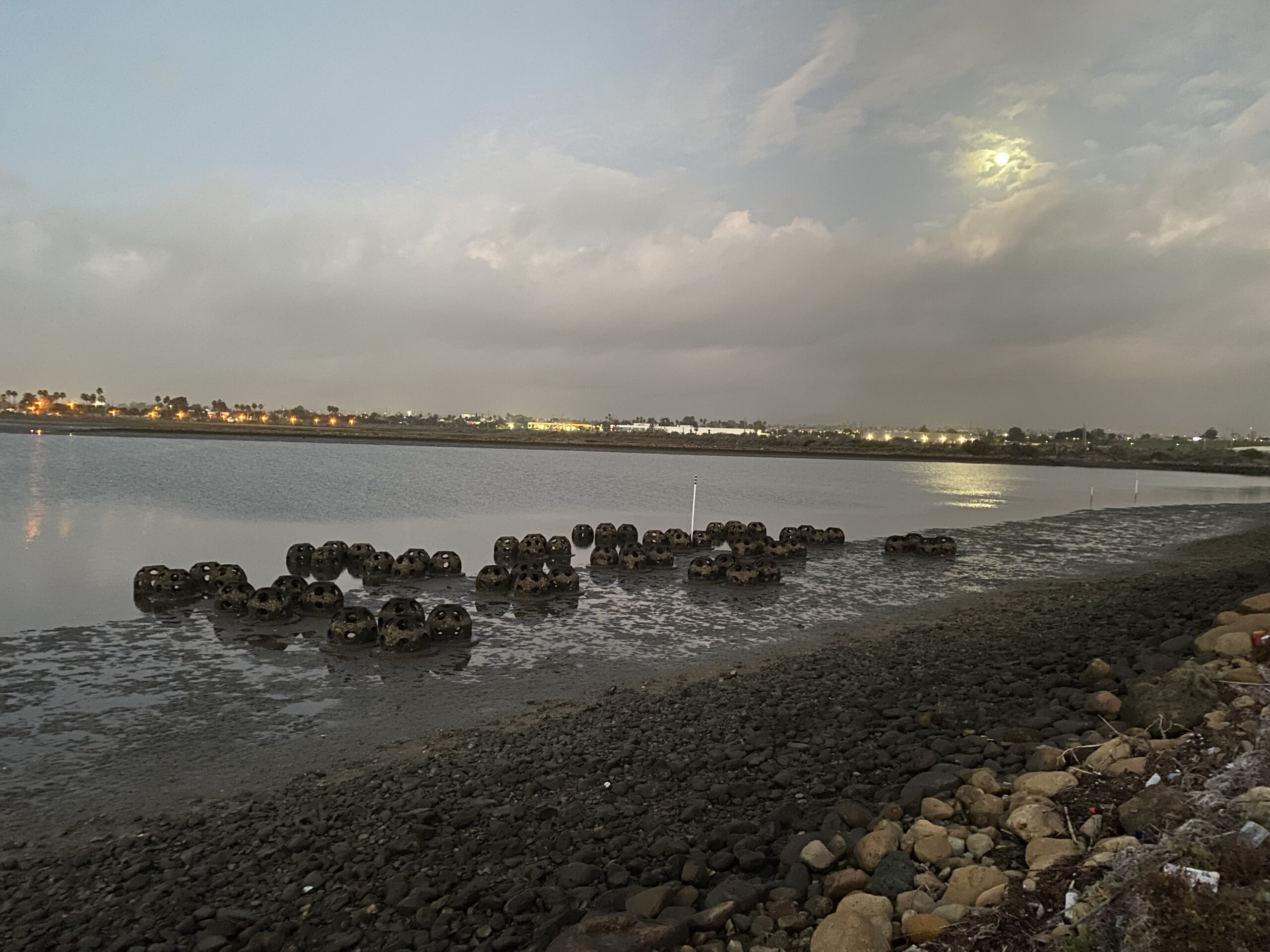Former Undergraduate Student
B.S. Marine Biology, B.A. Minor in Art
Email: anna.L.howe13@gmail.com
The Effects of Tidal Elevation and Wave Exposure on Oyster Recruitment in San Diego Bay, California
Abstract
Human introduced habitats such as seawalls and pier piles in California coastal areas have led to increased erosion and shoreline loss. Oyster restoration may reduce shoreline loss by reintroducing complex structure that slows wave action. The Port of San Diego installed spherical concrete Living Shoreline structures (“reef balls”) on the mudflats of the Chula Vista Wildlife Reserve in San Diego Bay to protect shorelines while also increasing native oyster (Ostrea lurida) populations and discouraging recruitment by non-native Pacific oysters (Magallana gigas). I surveyed the reef balls to determine the abundance and relative cover of native and non-native oysters to understand the distribution of both species relative to wind exposure and tidal elevation. I found that native oysters occupy more space on reef balls than non-native, but only on the outside of reef balls at lower elevations. Tidal elevation also had a significant effect on both species in which native oyster densities increased and non-native oyster densities decreased with lower elevations. However, there was no significant wind/wave action effect on oyster recruitment. These findings will contribute to efforts by the Port of San Diego to further adapt the building and construction of Living Shorelines to restore the population of native oysters and reduce erosion in San Diego Bay.

Anna Howe and Valerie Goodwin surveying reef balls in San Diego, CA.

Reef balls at the Chula Vista Wildlife Reserve site in the San Diego Bay, CA.




No Comment